Photographer and critic, born in 1960. Professor at Tama Art University, Department of Information Design, and member of the Institute for Art Anthropology. A specialist in visual anthropology, his activities connect various types of media, including photography, text, and video installation. Has worked with, published on and curated themes such as memory, movement, and the masses, and directed international exhibitions in both Japan and elsewhere. Served as the commissioner of the Japanese pavilion at the Venice Biennale 2007 and as Artistic Director of the Aichi Triennale2016.
photo© KENSAKU SEKI
To use the analogy of a tableau, the motifs are all be in place and an unknown world is about to be revealed in picture form. The audience sitting in the white studio may have already gathered around the edge of the canvas. But you get the impression that the work isn’t quite ready to be framed yet.
It all begins slowly, like the curtain coming down on a summer night or like the breathing of someone in deep sleep. We’re aware of one of the dancers lying in bed, somewhat unsure when he’ll wake up—or maybe he won’t? Then, as if to disturb his sleep, a laser beam is emitted. The dazzling green ray of light moves nervously and electrically across the floor of the studio, but whether it’s trying to draw something or just seeks to distract our gaze isn’t clear. Eventually, shadows of people appear on the back wall. They’re our own shadows, but then one of them rises and slowly begins to walk, and finally the long-awaited performance begins…Perhaps this presentation is intended to make us regain a sense of delay.
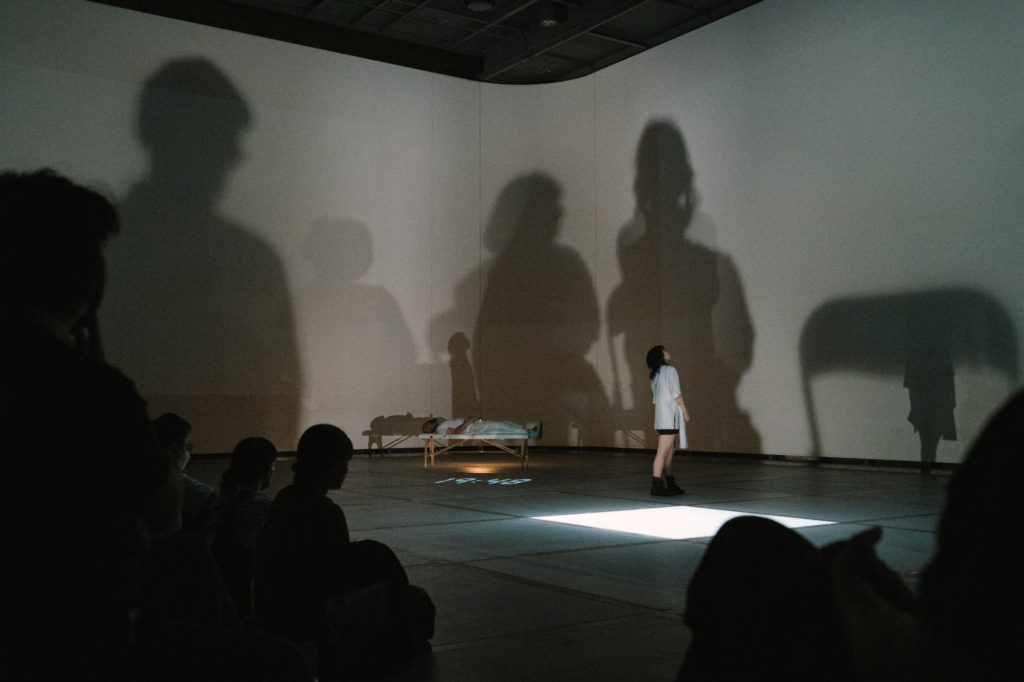
photo© KENSAKU SEKI
It is in such slowness that our senses are awakened. In that state our perception, entirely accustomed to an overflow of information through the media, is reset and we become able to accept the appearance of real people in a different way. The two dancers—one male, one female—performed contrasting movements, but I was particularly impressed by the former. He had been lying motionless on a bed since before the performance began but now began crawling around the studio in an odd manner, as if he had become one with the folding bed. Whether this was an example of the body becoming furniture or a piece of furniture turning into flesh and blood, I don’t know. Although somewhat different from Kafka’s “Metamorphosis,” what I witnessed was an experiment in transformation and creation, in which the body is transfigured into a third form through interaction with objects—and in this respect it was Kafkaesque in its strangeness.
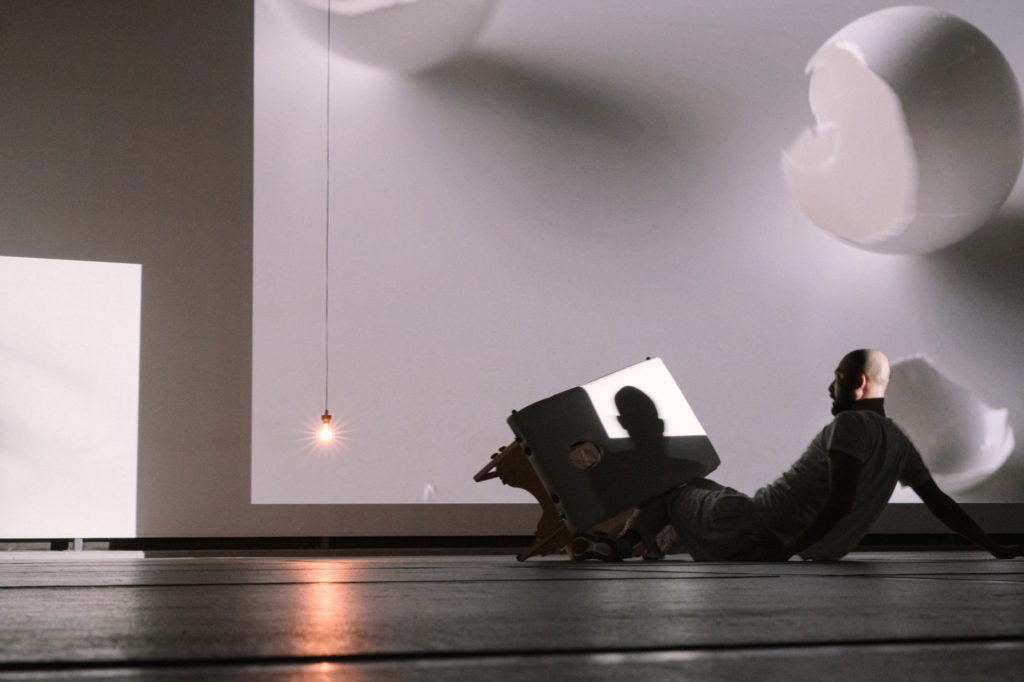
photo© KENSAKU SEKI
Strange and thrilling. A large plexiglass sheet was hanging in the back of the room, swinging back and forth in the air, and the man let out an unforgettably strange roar at the piece of plastic. This act could be construed as an expression of anger at being surrounded by countless such sheets in our daily lives, but I was more intrigued by the materiality of the item. I felt as if the objects in the space, including the folding bed, were approaching us with a different kind of materiality.
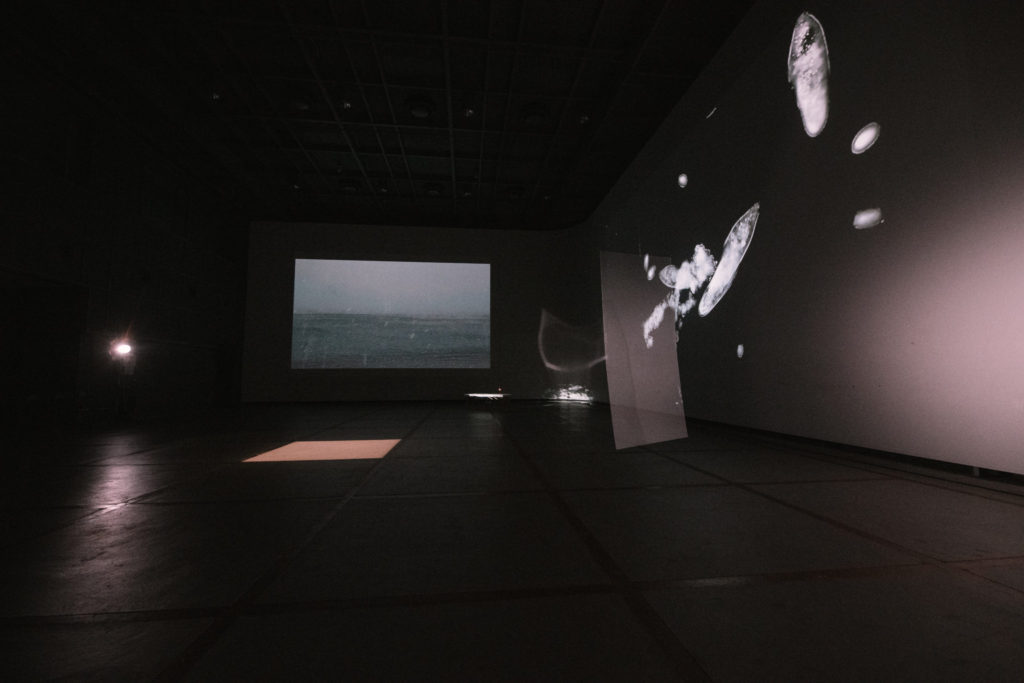
photo© KENSAKU SEKI
Meanwhile, the woman did not join in with the man’s spasmodic and uncontrollable outbursts of excitement and anger, nor did she appear to feel sympathy for him, choosing to maintain a cool distance instead. Here, a pause, which in ways appeared like a respite. One would think that the drama would finally unfold in the second half, but instead we were sent back into a time of delay. Putting this sort of work-in-progress performance, one so appropriate for a studio setting, into words is no easy task, but clearly “Rei Instar” asks us to simply take in what is unfolding before our eyes directly with our senses, rather than through words with meaning.
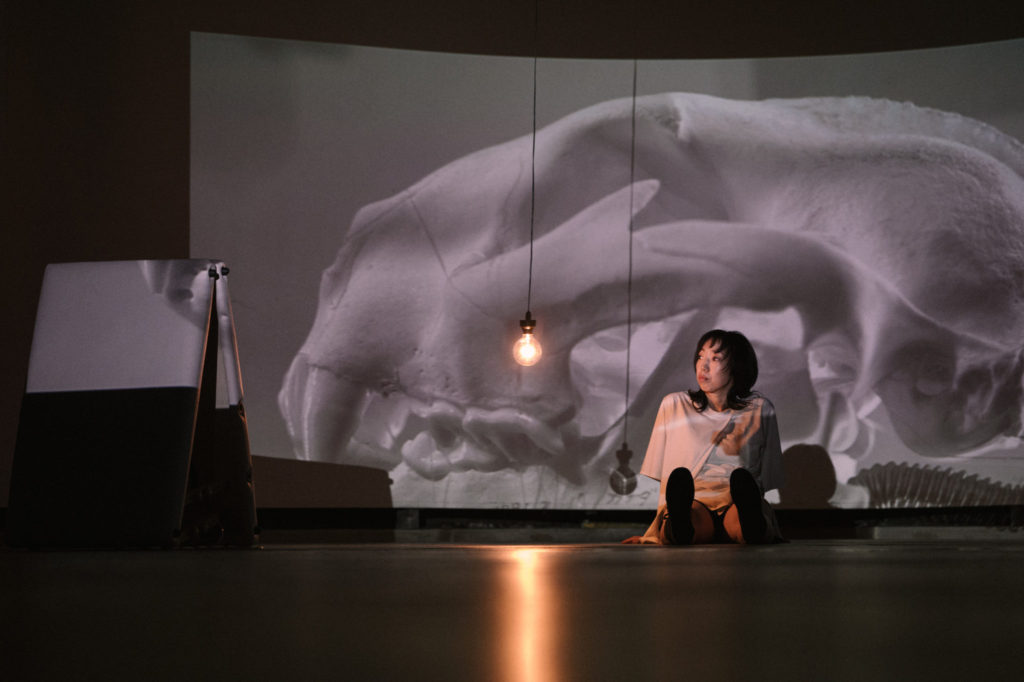
photo© KENSAKU SEKI
This isn’t to say that verbal hints aren’t given.
“Just like a blind person navigates their environment through trial and error, the field of experience is always uncertain and circumspect. We expand our perceptual experiences over time by fumbling along, relying on the sociocultural scaffolding that supports us.” (Extract from the performance’s official website)
What audience members experience is the socio-cultural “scaffolding” on which they stand, and what the performance shows is that said foothold is not solid, but rather fluid. Perhaps the same can be said for the artists.
“Our process of perceptual exploration should not be understood as predetermined, but rather as dependent on what we do and what we are prepared to do.” (Same as above)
In other words, the process of creating this work has been an act of perceptual exploration by the creators, including the dancers. They’re likely to have started by asking in what ways they’re “prepared” to move their bodies and produce images. They would have gone back to before a movement occurred and reassessed it. In other words, this is an exploration of retrocognition in movement and perception. What are described here as “delays” may not be delays in the everyday sense, but instances of such retrocognition.
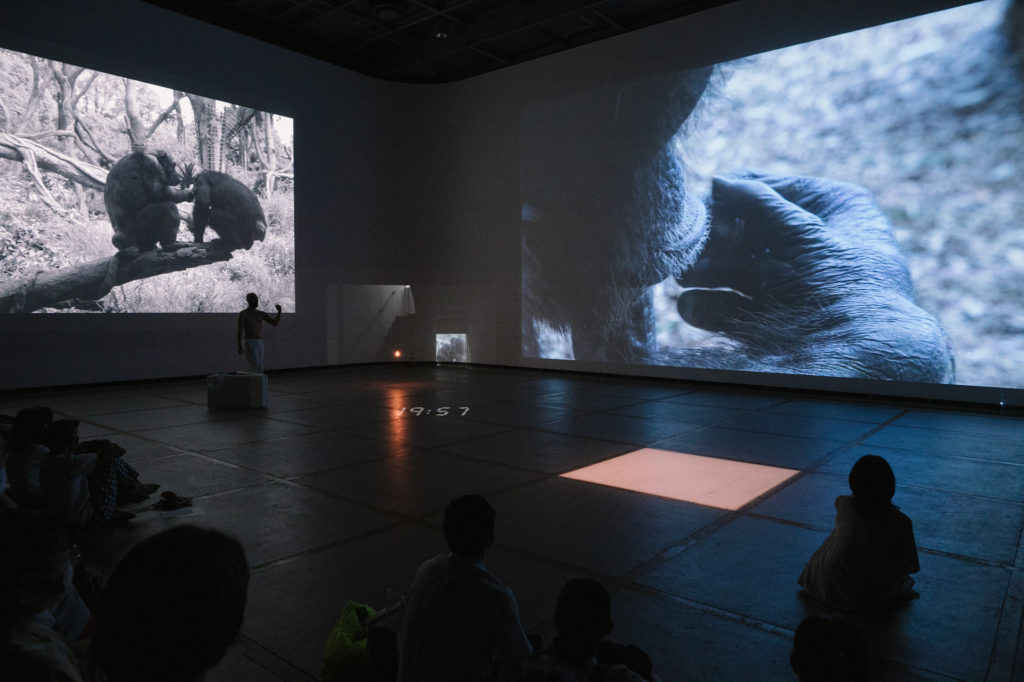
photo© KENSAKU SEKI
The titular word rei, or “instar” in English, means a phase of molting in the development of insects such as silkworms. The metamorphosis of molting insects has been a significant source of inspiration for art as well as mythology. If one age is preparation for another stage to come, one may be able to predict the next phase by going backwards through the stages.
Notable in this regard are the soundscapes and projected images used in the performance. Rather than synchronizing with the dancers’ movements, the meticulously constructed sound appeared to provide a foretaste of an event or a hint of things to come. The imagery employed includes the rotation of eggshells, the movement of microorganisms and, at the end, the subtle gestures of primates. The contrast between the thoughtful projection of these images and the bodies moving before my eyes, as well as the beauty of this divergence, made my mind wander. I thought of how contemporary society continues to be upended by invisible forces, of my feelings and their change from before to after said experience, and of my own perception that wavered on a boundary, not outside the performance space but not quite inside it either.
Likely there will still be plenty of blank space left on the canvas. Drawing the audience into it would require linkage of and provocation through sound, movement, and imagery. Feeling something that would activate an “instar,” I wonder what developments await us in the future. Is it a device that draws us into the magic of metamorphosis? I sincerely hope for “growth” through reflection on the fundamental question of what kind of “preparedness” is required for each and every act and movement.
Translated by Ilmari Saarinen
INFORMATION
Rei Instar
Organized by SC∀L∃R
Date: 2022.7.18 - 19
Venue: White Studio, Art Center of Tokyo
Choreography and Direction: Yoko Koike
Image: Sshin Yamane
Music and Sound Design: Toru Yamanaka
Performer: Elly Fujita, Tadashi Shimada









